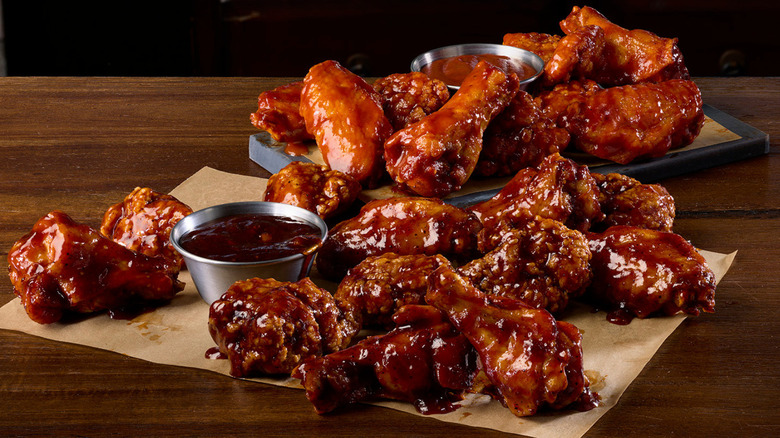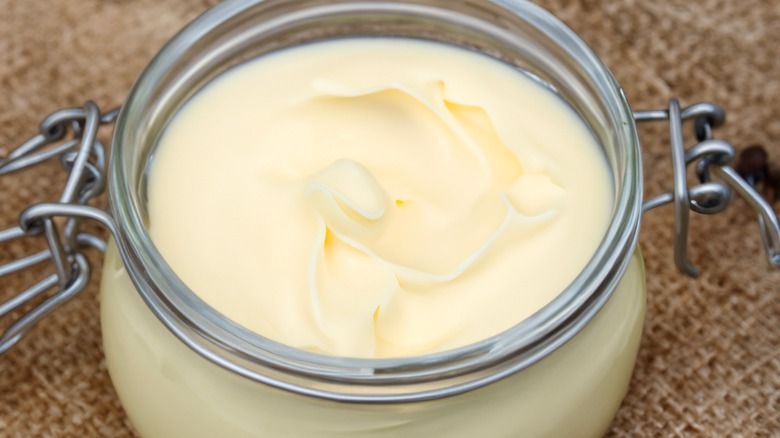The Ingredient That Gives Fried Food At Buffalo Wild Wings A Distinctive Flavor
When it comes to the classic combo of Buffalo wings, beer, and sports on a big screen, Buffalo Wild Wings does it better than most. Fondly nicknamed B-Dubs, the chain is known for its traditional and boneless wings and choice of more than 20 signature sauces and dry rubs, ranging from Lemon Pepper to Asian Zing and Jammin' Jalapeno. The menu also features a plethora of finger-licking fried foods such as the signature Dirty Dubs Tots, Cheddar Cheese Curds, Onion Rings, Fried Pickles, and more. However, there's a surprising ingredient that gives all of the restaurant's fried food its unique flavor. According to the chain's Allergen & Preparation Guide, everything from the wings (yes, even the cauliflower wings) to the mozzarella sticks and nacho chips is deep-fried in beef shortening.
While this means vegetarians and vegans should probably avoid Buffalo Wild Wings, beef shortening has its benefits. It has a high smoke point, so it's excellent for frying, and it's shelf-stable if you store it properly. It also produces that nostalgic flavor from the heyday of some of America's favorite fast-food chains, which were known to use beef fat for frying back in the day. For example, before McDonald's switched up its recipe in 1990, its famous french fries were cooked in beef tallow for many years.
What is beef shortening?
You'll find netizens everywhere arguing the differences between beef tallow and beef shortening, but it's actually quite straightforward. Shortening is fat that's solid at room temperature. Its name comes from how it helps "shorten" gluten fibers when incorporated into dough. The result is flaky pie crusts and crumbly cookies — different from doughs with longer gluten strands that are the foundation for chewy artisan breads.
Beef tallow and beef shortening are essentially the same. However, beef shortening may contain additives like BHT to improve stability. The term shortening is often associated with plant-based fats derived from vegetable oil such as Crisco. But Crisco didn't hit the scene until 1911, so before those modern versions, old-school animal fats like tallow and lard were used as shortening. Beef tallow is rendered from suet, a solid fat around the cow's kidneys and loins. Melt that hard fat down and strain it to remove impurities, and you've got tallow to be used as shortening.
Aside from its frying benefits, beef shortening can be used like any other cooking fat. For example, you can use it to roast vegetables or sear meats. While more neutral-tasting shortenings, like Crisco, are typically preferred for baking, tallow works just as well in baked goods, though it may lend them a more savory, earthy flavor.

